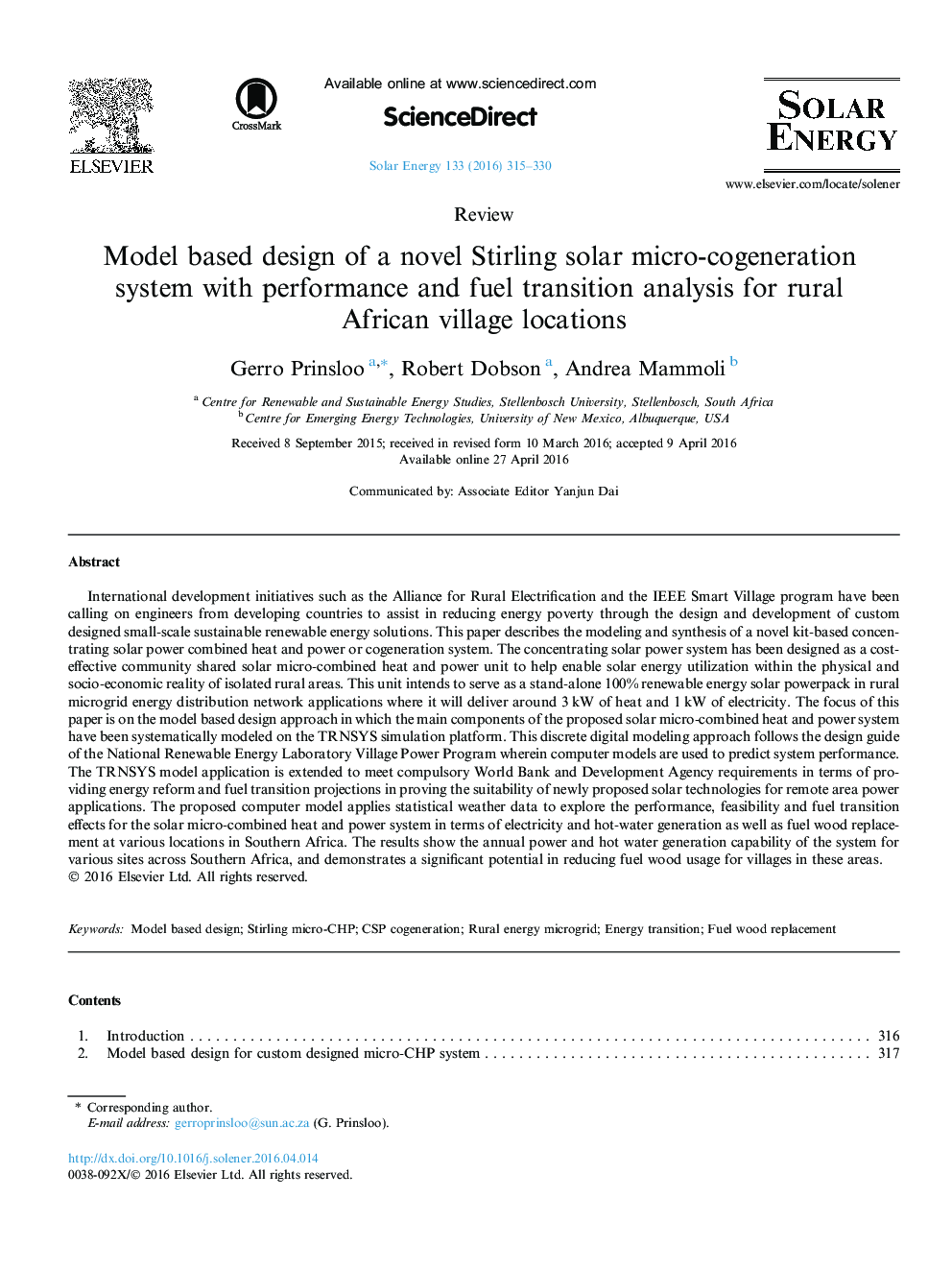| کد مقاله | کد نشریه | سال انتشار | مقاله انگلیسی | نسخه تمام متن |
|---|---|---|---|---|
| 1549374 | 1513085 | 2016 | 16 صفحه PDF | دانلود رایگان |

• Solar energy utilization in physical & socio-economic reality of isolated rural areas.
• Numerical modeling of custom designed kit-based Stirling CSP micro-CHP system.
• Simulation prediction of CSP system performance in isolated rural African contexts.
• Analysis on fuel transition projections & rural energy generation reform.
• Demonstration of sociological relevance and sustainability merit of solar technology.
International development initiatives such as the Alliance for Rural Electrification and the IEEE Smart Village program have been calling on engineers from developing countries to assist in reducing energy poverty through the design and development of custom designed small-scale sustainable renewable energy solutions. This paper describes the modeling and synthesis of a novel kit-based concentrating solar power combined heat and power or cogeneration system. The concentrating solar power system has been designed as a cost-effective community shared solar micro-combined heat and power unit to help enable solar energy utilization within the physical and socio-economic reality of isolated rural areas. This unit intends to serve as a stand-alone 100% renewable energy solar powerpack in rural microgrid energy distribution network applications where it will deliver around 3 kW of heat and 1 kW of electricity. The focus of this paper is on the model based design approach in which the main components of the proposed solar micro-combined heat and power system have been systematically modeled on the TRNSYS simulation platform. This discrete digital modeling approach follows the design guide of the National Renewable Energy Laboratory Village Power Program wherein computer models are used to predict system performance. The TRNSYS model application is extended to meet compulsory World Bank and Development Agency requirements in terms of providing energy reform and fuel transition projections in proving the suitability of newly proposed solar technologies for remote area power applications. The proposed computer model applies statistical weather data to explore the performance, feasibility and fuel transition effects for the solar micro-combined heat and power system in terms of electricity and hot-water generation as well as fuel wood replacement at various locations in Southern Africa. The results show the annual power and hot water generation capability of the system for various sites across Southern Africa, and demonstrates a significant potential in reducing fuel wood usage for villages in these areas.
Journal: Solar Energy - Volume 133, August 2016, Pages 315–330